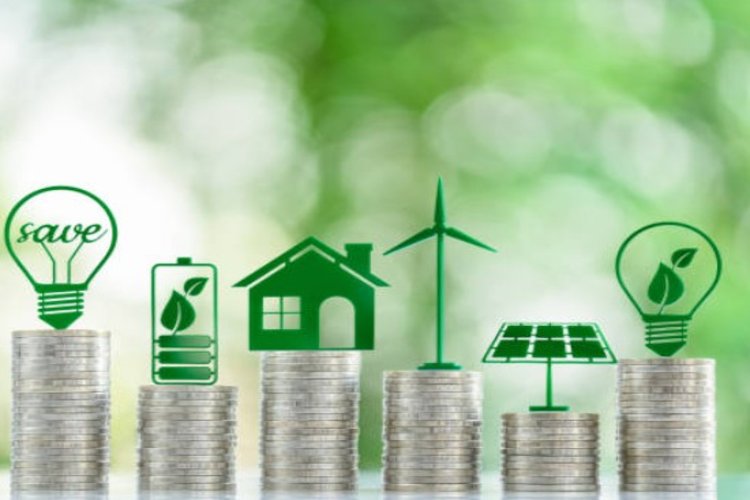
Green subsidy: In the spring of 2026, when Brussels begins enforcing its Carbon Border Adjustment Mechanism, Indian steel, aluminium, fertiliser and hydrogen exporters will feel the first tremors. It is a policy that ties the embedded carbon in goods to a matching tariff, making climate performance a determinant of market access. However right India may be in arguing that this levy is unfair, the reality is that it will still hit us.
To stay competitive, India must see subsidies as strategic instruments of national power. Public money cannot be spread like thin butter across all that glitters green. It must be invested where it buys the most — in export security, emissions reduction, domestic jobs, and long-term technology learning. The government’s dilemma is therefore not one of choice between battery metals, green steel or green hydrogen, but one of sequencing and precision. Each of these technologies represents a piece of India’s future industrial jigsaw, but not all yield the same returns per rupee of subsidy.
READ | Non-alignment 2.0 is India’s best bet in a polarised world
Consider a steel plant in India. It has spent decades perfecting its blast furnace process, employing thousands and supplying both domestic infrastructure and European buyers. Under the new carbon regime, its steel will face a levy unless it can prove low emissions. The technology to do so exists, but it is costly and risky for the company to adopt without public support. The choice for the government, then, is not whether to support this transition, but how. Subsidy must enable transformation, not merely offer comfort.
Green subsidy in global context
The global context makes this urgent. Carbon border taxes are no longer policy experiments. They are becoming the architecture of a new world trade order in which carbon is currency. The United States has already raised tariffs on certain clean-tech imports. Europe is pricing carbon at its border. Japan and Canada are examining their own adjustments. These policies, though framed as climate measures, could reshape comparative advantage. Countries that cannot verify low-carbon production will pay for access. Countries that can will command a premium. The fairness argument is morally valid, but strategic realism demands that we adapt faster than we protest.
India’s subsidy choices must therefore follow a clear hierarchy. Batteries and the circular battery ecosystem deserve the largest share. They are scalable, job-rich, and already drawing private capital that can be leveraged by public money. Subsidies here accelerate scale, reduce import dependency, and create long-term resilience through recycling. The impact is immediate, the spill-overs vast, and the returns measurable across transport, storage and renewable integration.
Green steel must follow as a close second. It is capital-intensive and slower to transition, but it sits at the heart of our export exposure. Without decarbonised steel, India risks losing its foothold in the European market and facing stranded assets at home. Here, the government should target subsidies to pilot hydrogen-based direct reduction projects, help retrofit existing mills with renewable energy, and create a market for low-carbon steel through public procurement. A contract-for-difference mechanism that rewards verified low-carbon output can de-risk investment while maintaining accountability. If battery subsidies are the engine of growth, green steel subsidies are the shield for our trade security.
Green hydrogen is the third pillar. It is not yet cost-competitive, but it is indispensable for decarbonising hard-to-abate industries such as fertilisers, refineries and heavy transport. The approach must be disciplined. Subsidies should support electrolyser manufacturing, create domestic demand corridors, and ensure reliable renewable power supply. Hydrogen may not deliver immediate fiscal returns, but it secures India’s future in the global energy system. The seeds planted now will define our export profile in the next decade.
Around these three pillars must stand the enabling infrastructure that holds them together — transparent emissions verification systems, renewable corridors, ports, skills and recycling networks. These may not sound glamorous, yet they will determine whether India can credibly prove its low-carbon credentials abroad and negotiate fairer treatment under carbon border regimes. Public investment here will multiply the effectiveness of every rupee spent on technology subsidies.
This priority list offers both prudence and ambition. Roughly two-fifths of available subsidy capital should go into batteries and recycling. Around one-quarter to one-third should secure green steel. A fifth should be reserved for hydrogen, and the remainder for the ecosystem that ties these together. The design of these subsidies matters as much as the allocation. They must be performance-linked, conditional on verified output, and time-bound. Capital grants can help first movers cross the valley of death, but performance-based incentives should dominate. Long-tenor low-cost credit and government procurement guarantees will draw in private investment. Clear exit timelines will prevent permanent dependency.
India’s philosophy of subsidy must evolve from generosity to precision. Each rupee should carry a measurable purpose: tonnes of carbon avoided, units of export saved, jobs created, or private capital mobilised. After three years, every scheme must be audited and rebalanced. This discipline is essential if India’s green subsidies are to be respected globally and effective domestically.
The returns on such discipline are immense. First, it protects Indian exports from punitive carbon costs by aligning production with verifiable low-carbon standards. Second, it deepens domestic manufacturing, especially in the energy-storage chain where global competition is fierce. Third, it accelerates decarbonisation in heavy industry, which is responsible for a large share of national emissions. Finally, it strengthens India’s negotiating hand in climate diplomacy by proving that fairness and ambition can coexist.
There are risks to guard against. Subsidy races can create rent-seeking and waste. Poorly monitored incentives can invite green-washing. Design flaws can lead to trade disputes if support measures appear discriminatory. Each of these can be mitigated through transparency, third-party verification and clearly published criteria for eligibility and withdrawal. India must also insist on mutual recognition of emissions accounting so that its exporters are not trapped in expensive compliance regimes created elsewhere. A national framework for measurement and verification will give us both credibility and bargaining power.
India must also act with greater diplomatic and administrative foresight. Reports suggest that the European Union has offered certain flexibilities to the United States within their trade framework, shielding American exporters from the full weight of CBAM obligations for now. India should study these provisions carefully and demand comparable treatment as part of its ongoing trade negotiations with the EU. Parity of treatment is not a concession but a matter of equity among major trading partners.
Yet diplomacy alone will not suffice. Despite having a two-year transition window since October 2023, India has made little progress in preparing its exporters for CBAM compliance. Many firms, particularly small and medium enterprises, remain unsure of how to measure or report embedded emissions. There is still no clear national framework for verification or certification, no large-scale capacity-building programme, and no targeted subsidy to offset the initial cost of compliance. If we fail to close this readiness gap, the very sectors that have powered India’s export growth could face a silent erosion of competitiveness when the CBAM curtain finally lifts.
India has long argued that carbon border taxes are unjust. That argument remains correct. Yet the world rarely waits for justice before setting its rules. This is not a contest between environmentalism and economics. It is a contest for industrial leadership in a decarbonising world.
The choice before India is to use its subsidies not as charity to industries, but as investments in sovereignty. If we do this right, we will not merely survive the age of carbon levies. We will turn it into the age of Indian green power.
Srinath Sridharan is a strategic counsel with 25 years experience with leading corporates across diverse sectors including automobiles, e-commerce, advertising and financial services. He understands and ideates on intersection of finance, digital, contextual-finance, consumer, mobility, Urban transformation, and ESG. Actively engaged across growth policy conversations and public policy issues.

